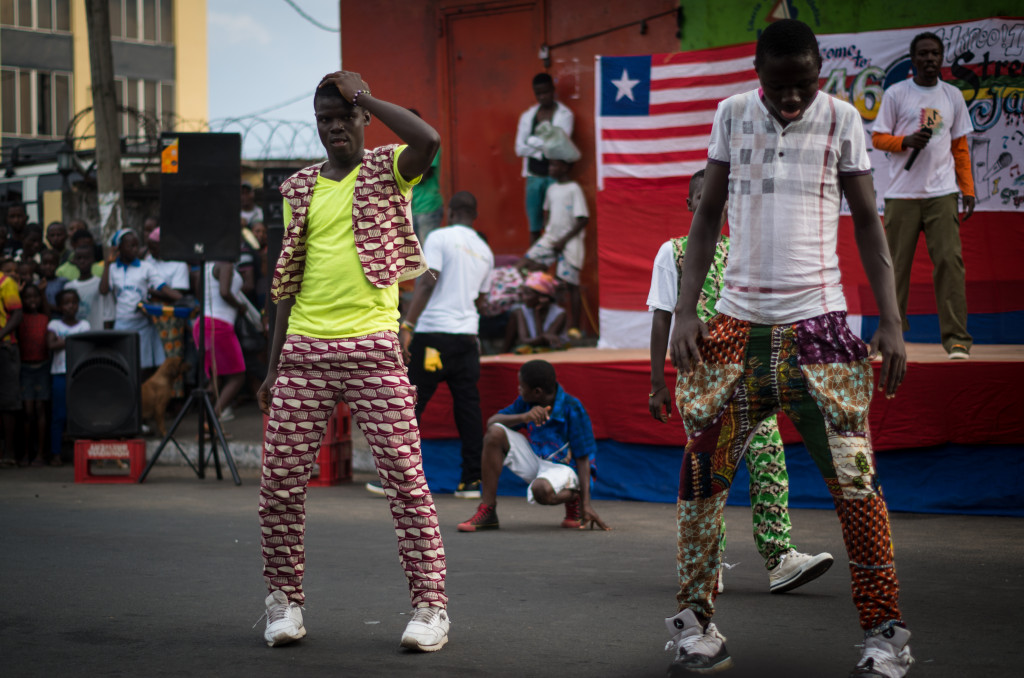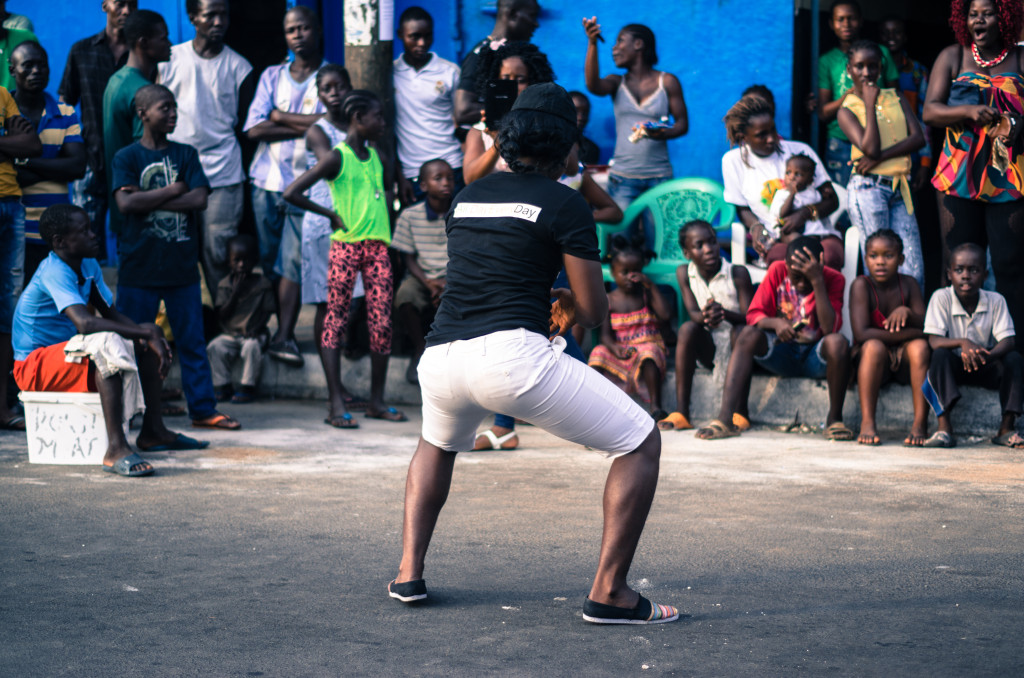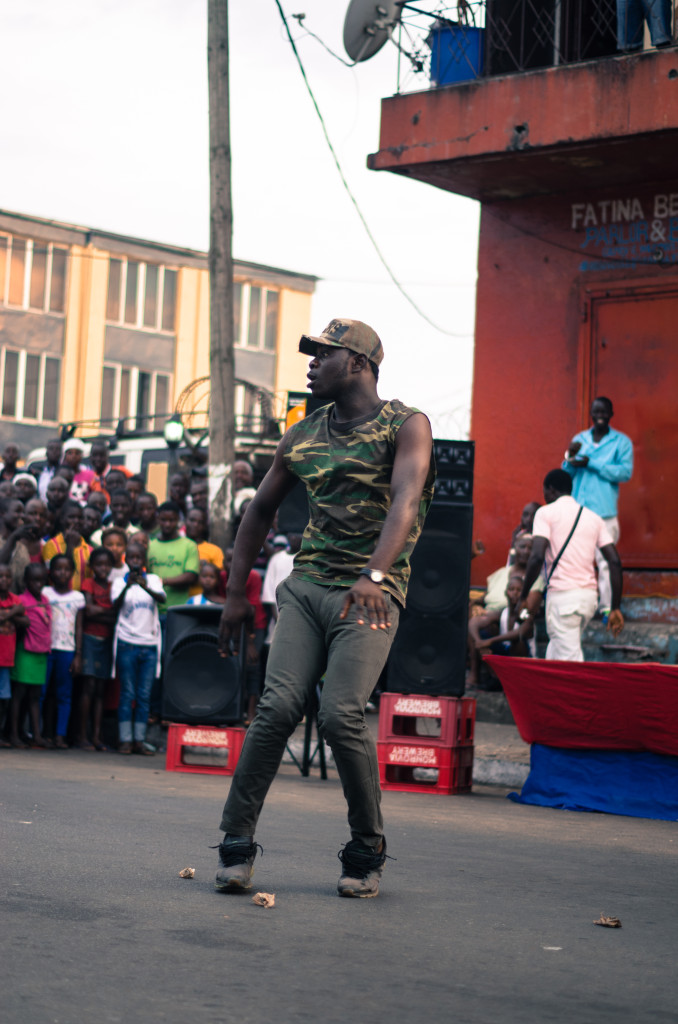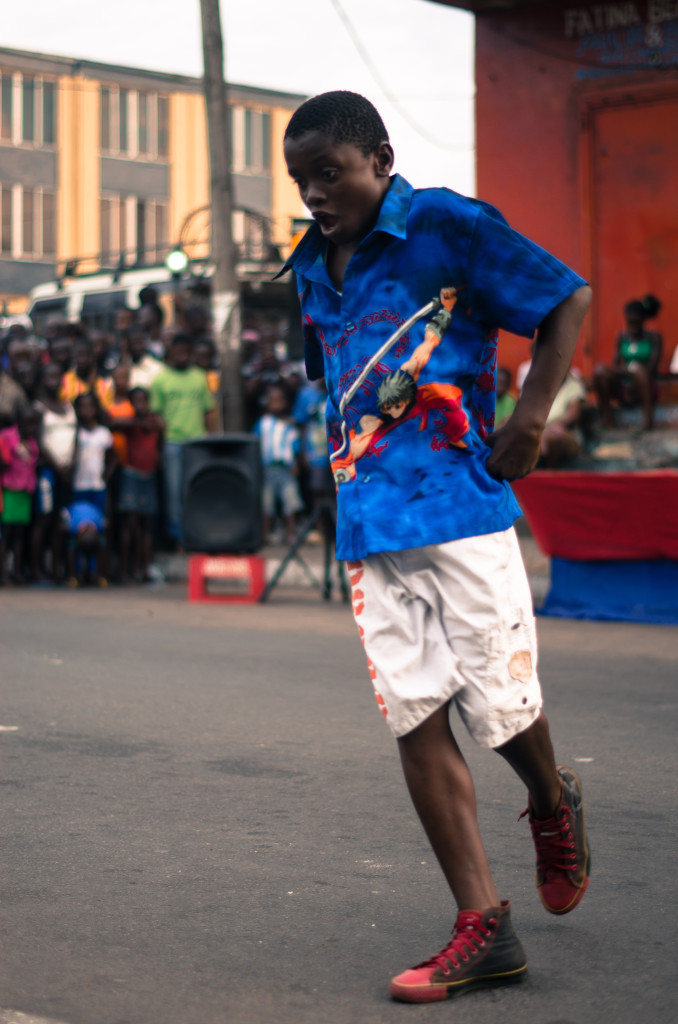
“I want to do it my way – I wish I had my own way,” sings Takun J., Liberia’s own superstar. Today he performs at an “Anti-Ebola-stigmatization event” at 146, a bar in downtown Monrovia. Together with other artists Nasiman, Butterfly, Peaches and Skeet, he begs Liberia not to discriminate against Ebola survivors. The event, organized by Takun J and crew, reflects the latest trend in Liberia pop culture: Ebola. Liberian artists sing about anti-stigmatization of Ebola survivors and the mistakes the government made during the outbreak. Take for example, Ebola in Town from Shadow, D12, and Kuzzy of 2 Kings, all Liberian artists. The song warns Liberians not to “touch your friend, no kissing, no eating something – it’s dangerous.” The trend was set and local musicians got the “vibe”. To fight Ebola: use art as your weapon.

Ebola in town: insufficient government capacity and dangerous traditions
When Ebola hit Liberia, infrastructure and social customs were said to make things worse. By July 2014 it became undeniable: the deadly Ebola virus was “in town”. Or, as D12 and Kuzzy of 2 Kings rap: “I woke up in the morning, people yelling – something in town – frisky. The thing is fast to kill. Ebola in Town.” When a traveler brought Ebola from the north of Liberia to the capital city, Monrovia, panic erupted. The Liberian government could no longer handle the situation: there were not enough ambulances to collect sick patients and dead bodies. The sound of the sirens of the Ebola ambulances could be heard all day round in Monrovia. Fear of infection and concerns about the safety of one’s family became a 24 hour pre-occupation. The international community was slow to react and except for the MSF-run (Doctors Without Borders) Eternal Love West Africa (ELWA) Ebola Treatment Unit in Monrovia and the Ebola Treatment Unit in the north of the country, care for Ebola patients was not available.

Liberian traditions were of concern during the outbreak. Burial practices such as the washing and touching of diseased loved ones, together with lack of education and awareness of the Ebola virus, were identified as contributing to the spread of infection. The typical Liberian “flick” with the fingers upon greeting also was concerning during “the Ebola times.” To stop Ebola, Liberia needed to make some important changes. To date, 4162 people have died in Liberia (1). Now, in March 2015, the outbreak seems under control and the last Ebola patient has been dismissed from the Ebola Treatment Unit. Popular culture seems to have helped in the fight against the invisible enemy that Ebola is. How did it manage to do that?

Popular culture against Ebola
Artists like Takun J and his Hipco colleagues, who make indigenous rap music, will tell you the obvious answer: to reach the Liberian citizens, you use popular culture. Popular culture has a huge influence on human interaction and behavior and its functionality is often under-estimated. It is no coincidence that music, art, and dance are popular forms of expression in Liberia; traditionally these were used to discuss important matters in life, be it positive (love, friendship) or negative (corruption, crime, death). Especially in a country like Liberia, where modern communication infrastructure is inadequate or even lacking, most information sharing is done either by radio or by word-of-mouth. Newspapers do not reach enough people. Even though several newspapers are printed in Monrovia, hardly any make it out to the rural interior of the country. This not only because of the bad roads – local bush taxis sometimes take several days to reach their destination – but also because 42.9 percent of the adult Liberian population could not read the papers even if they were to reach their villages.

This is not to say rural communities are completely isolated – most news is spread by radio or town gossip. Illegally downloaded music and movies are widely available and can be uploaded to a USB key in even the most remote villages. Pocket radios and radios installed on mobile phones serve entire villages. This means that anybody who wants to spread any sort of message in Liberia tries to get airplay, preferably with a catchy song. Airtime is bought by NGOs and UN agencies to play “their” Ebola prevention and anti-stigmatization songs. International organizations like the International Red Cross and UNICEF quickly grasped the importance of popular culture in Liberia. Initiatives like the Ebola song of the Peace Crusaders that were funded by INGOs and UN agencies are now well played regulars on the local radio.

Internet and mobile phone: new media against Ebola
With the rise of the Internet and mobile phone services, new communication platforms like Facebook and YouTube have been growing in popularity. News is no longer exclusively spread through traditional communication channels; new media are on the rise and have played an important role in the transmission of information during the Ebola period. Take for example Liberians Against Ebola, Inc., a local initiative started by concerned Liberians and friends of Liberia based in Liberia, the US and the UK. They plan to “contain the spread of the deadly Ebola virus in Liberia.” These efforts are carried out in part by supporting the creation of a comic book about Tabellah Tee, a fictional international soccer star. In the story, Tee is a survivor of the Ebola virus, informs the readers on the signs and symptoms of Ebola, and explains what steps need to be taken in order to avoid infection. At the end, the reader is asked not to stigmatize Tee and to accept him in society again. Tee is promoted on Facebook (https://www.facebook.com/TabellahTee ) and LAE posts about their success with the hash tag #Ebolastopswithyou.

Liberians for Liberia
What does the Liberian case tell us? The most important lesson is that to effectively change hazardous behavior, public messaging should fit local reality and make use of available communication methods. Local initiatives from Liberians for Liberians and by Liberians that address the gaps in knowledge of the Liberian population when it comes to Ebola are invaluable. This also boosts morale, something Liberians thirst for these days. For instance, Fofanaa, a 16 year old student in Monrovia, believes that Liberians have greatly contributed in the fight against Ebola: “We did it our own little way – small small.” Step by step Ebola is banished from Liberia, and Liberians celebrate when dancing to yet another anti-stigmatization song. “Little by little,” Liberia will get to terms with the Ebola outbreak.
—
About 146 & Hipco
Takun J established bar 146 to create a platform for Liberian artists to musically address struggles of Liberian daily life. Up to date 146 is the only live-music venue in Liberia.
Hipco is a typical and unique Liberian form of musical expression: it is “the Liberian language of the streets and market,” put to rap music. Or as Takun puts it on his website: “It’s the way we talk everyday but then put into a song.” And that is exactly what Hipco sounds like: a humorous account of an everyday tragedy (be it corruption, poverty or criminality), and rapped in the Pidgin English of Liberia.
Reference
1 – Center of Disease Control. “2014 Ebola Outbreak in West Africa.” http://www.cdc.gov/vhf/ebola/
Takun J Website and Videos:
https://www.youtube.com/watch?v=QDKv2WTTMvI
https://www.youtube.com/watch?v=T_OpHaWFSos
UNICEF Crusaders for Peace:
https://soundcloud.com/unicef-liberia/crusaders-for-peace-ebola-song
Red Cross Anti-stigmatization song:
Ingrid Gercama is a freelance journalist living in Monrovia, Liberia. Gercama developed a taste for writing and photography whilst living in Harper city, Liberia. Working in international development in Liberia and conducting (academic) research in Guatemala and Liberia has developed her never ending curiosity and ability to do in-depth and boundary crossing research on issues that matter. Her background in Anthropology and non-Western sociology (BSc University of Amsterdam) and International Development Studies (MsC, University of Amsterdam) helps her to make sense of the world around her.



One Response
amaizing speech!!